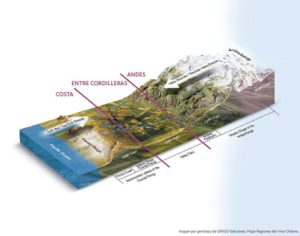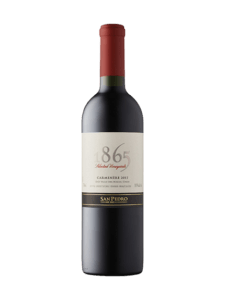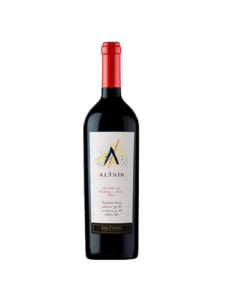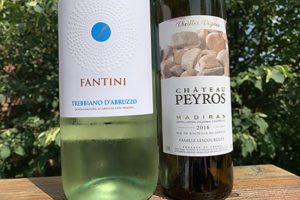 OK, I bet a bunch of you recognize Chile as a bastion of great-value wines—Cabernet Sauvignon, Carmenère (which they should grow a lot more of) and Sauvignon Blanc, among others.
OK, I bet a bunch of you recognize Chile as a bastion of great-value wines—Cabernet Sauvignon, Carmenère (which they should grow a lot more of) and Sauvignon Blanc, among others.
But at a traditional consumer level, it’s often missed that the same bang for the buck applies to Chile’s more premium wines as well—bottles that regularly garner critics’ ratings of 91+ and that would cost you more than double if they were made in Canada, much less the price they’d fetch in Napa.
But first, a quick geography lesson. This skinny string bean of a country averages just 177 km east to west, but from north to south it extends a whopping 4,270 km (roughly the distance from Toronto to Vancouver), caressing a total of 6,435 kms of coastline along the way until it finally wraps around Cape Horn, that tumultuous confluence of the Atlantic and Pacific Oceans at the bottom of South America.
But it’s not so much north to south that matters from a winemaking standpoint; it’s east to west, thanks to a pair of mountain ranges (the Andes, which flanks the country’s eastern border, and the Coastal) and the chilly waters of the Pacific Ocean. “We have two natural refrigerators (moderating the climate),” explains Viviana Navarrete, the chief winemaker at Viña Leyda, whose vineyards (an hour’s drive west of the Chilean capital of Santiago, just 4 kms from the Pacific), are ideally situated to grow cool-climate grapes like Sauvignon Blanc, Chardonnay and Pinot Noir.
“DRY” WINE
 The valleys in between those two mountain ranges are home to Chile’s most prominent wine regions, where snowmelt flowing from the Andes to the Pacific feeds several rivers (although finding water is becoming increasingly challenging due to climate change).
The valleys in between those two mountain ranges are home to Chile’s most prominent wine regions, where snowmelt flowing from the Andes to the Pacific feeds several rivers (although finding water is becoming increasingly challenging due to climate change).
The good news is that Chile’s arid climate makes it easy to avoid pests and disease that would otherwise encourage the use of pesticides. Consequently, a crazy-high 75% of exported Chilean wine is sustainably produced.
And that wine production is prolific. At just under 12 million hectolitres last year, Chile ranks as the seventh-largest wine producer in the world (more than South Africa and only a hair less than Australia). And while most of Chile’s wine was still being consumed at home as recently as the 1990s, they’re now the fifth-largest exporter in the world.
It’s mainly because Chile’s winemakers are getting better at what they do—really fast. Hosted by Master Sommelier John Szabo, a virtual master class event last week included a trio of Chile’s top winemakers from VSPT Wine Group, an association of eight noted Chilean wineries. The event focused on regionality and got way into the technical aspects of winemaking in the country. But it also introduced attendees to a fabulous cross-section of what Chile is capable of.
THE HIGHLIGHTS
Here are some of the wines we sampled that you need to buy.
 Leyda 2018 Single Vineyard Garuna Sauvignon Blanc — Leyda Valley, Chile ($17)
Leyda 2018 Single Vineyard Garuna Sauvignon Blanc — Leyda Valley, Chile ($17)
Wine critics have been raving about Chilean Sauvignon Blanc in recent years. “It’s by far the best export of Chile today,” says Navarrete, who was selected Winemaker of the Year by Master of Wine and journalist Tim Atkin, and one of the world’s 13 best female winemakers (and the only South American on the list) according to Wine Enthusiast.
This 2018 vintage, released July 25 at the LCBO, is particularly good. As opposed to the super-high acid and citrus and bell pepper-dominated Sauvignon Blancs you might be used to from New Zealand at this price point, this is a creamy, fresh, mineral-driven version that’s quite herbal in nature, albeit with sufficient acid on the palate. Its floral nose includes tomato leaf, lime and a touch of grapefruit, while its complexity carries over to a long-lasting finish. Its herbaceous nature might not fit with the traditional Sauv Blanc consumer tastes, but I personally loved this wine, and most of my fellow tasters last week concurred. 90
 Leyda 2016 Lot 21 Pinot Noir — Leyda Valley, Chile ($30)
Leyda 2016 Lot 21 Pinot Noir — Leyda Valley, Chile ($30)
This one’s not available right now, which really sucks, but I’m hoping it will be by Christmas, because it would be absolutely perfect with turkey. Complex, elegant, smooth, soft tannins, perfumy, plenty of raspberry, cherry and currant fruits without being sweet or tart, with secondary aromas of earth and mushroom, it’s hand-picked four kilometres from the Pacific, with less barrel aging and more time in concrete to let the fruit express itself. And Navarrete noted that they only make 2,500 bottles a year! Great price for this quality. 91
 1865 Selected Vineyards Carmenère (2018) — Maule Valley, Chile ($19.95) (Sept. 19 release)
1865 Selected Vineyards Carmenère (2018) — Maule Valley, Chile ($19.95) (Sept. 19 release)
The 1865 range of wines from Vinna San Pedro, launched in 2001, commemorates the year the San Pedro winery was founded, which gives you an idea how long they’ve been making wine in Chile. This late-ripening Carmenère has been caressed to deliver a wonderful harmony of fruit (ripe plum and blackberry) and herbs (cloves, white pepper) in a softly spiced, delicate body. Caution: the 14.5% alc. is pretty well concealed, so don’t drink this too fast! 90
 Viña San Pedro 2018 Sideral — Cachapoal Andes Valley ($29.95) (through the agency only)
Viña San Pedro 2018 Sideral — Cachapoal Andes Valley ($29.95) (through the agency only)
In 2002, Viña San Pedro founded a winery focused on fine wines. Located in the Cachapoal Andes Valley at the foot of the Andes, five iconic wines are grown here: Altair, Cabo de Hornos, Sideral, Kankana del Elqui and Tierras Moradas. (All three featured here are only available by private order through Philippe Dandurand Wines Ltd.)
The Sideral is a blend of 72% Cabernet Sauvignon, 18% Syrah, 4% Cabernet Franc, 3% Petit Verdot and 3% Carmenere—all hailing from four different soils that reflect the diverse geological origins in the estate. Look for concentrated, explosive fruit that leans slightly to the blue side (blueberries, blackberries), although there’s a juicy dark cherry in there too. Aged for 14 months, it’s medium-plus to full-bodied with soft tannins, a very long, velvety finish and is as harmonious and artfully structured as a Frank Lloyd Wright masterpiece. Cellarable, but so good right now. It’s considered second-tier among the icon wines—but really shouldn’t be—and is consequently notably underpriced. 93
 Viña San Pedro Cabo de Hornos 2017 — Cachapoal Andes Valley, Chile ($74.95)
Viña San Pedro Cabo de Hornos 2017 — Cachapoal Andes Valley, Chile ($74.95)
Noth the name, Cabo de Hornos, Spanish for Cape Horn, and the bottle’s unique label pay tribute to navigators through 17th-century cartographic design cues. Planted in fertile soils in the foothills of the Andes but kept frost-free by consistent winds off the slopes, this is a land of cool nights and sunny days, making for great ripening but also the herbal nature that comes from a little altitude. This big 100% Cabernet Sauvignon was aged for 18 months in French oak barrels (50% new), then bottle-aged for another eight months. But both the tannins and alcohol (14.6 %) are fairly well integrated into a plump, delectable package of blueberries, blackberries and raspberries, with secondary notes of eucalyptus, tobacco and leather. Decant it for an hour before serving and pair it with steak or venison. And invite me over. 94
 Viña San Pedro Altaïr 2016 — Cachapoal Andes Valley, Chile ($79.95)
Viña San Pedro Altaïr 2016 — Cachapoal Andes Valley, Chile ($79.95)
Named for one of the brightest stars in the sky—particularly visible in Chile during August and September—this is Viña San Pedro’s top-shelf wine. Unlike it’s baby brother (Sideral), the alcohol is quite potent on the Altaïr (it says 14.5% on the bottle, but 14.9 % from the winemaker notes, and I tend to believe the latter). So decanting (or cellar aging) is required to tone things down in this powerful, full-bodied blend of the winery’s best grapes from its best vineyards—a mix of 78% Cabernet Sauvignon, 13% Cab Franc and 9% Syrah. Although aged for 16 months in French oak barrels, the oak is not that prominent, and tannins softer than anticipated, with a great concentration of fruit picking up momentum quickly as you work your way into the glass. Long finish. Great wine. But it probably needs more time in the cellar before it really hits its stride. 93.5
2 MORE GREAT VALUES AT THE LCBO
 Wakefield Estate Shiraz 2018— Clare Valley, Australia ($19.95)
Wakefield Estate Shiraz 2018— Clare Valley, Australia ($19.95)
Featuring a medium to medium-plus body, with notes of blackberries, plums and black cherries, and backed up with aromas of coffee, dark chocolate and baking spices, this is an ever-reliable, elegant, dry Shiraz from the Clare Valley. And 2018 was a strong vintage for the region. Don’t bother with cellaring—it’s ready to drink now. Great value. 89
 Château de Nages JT Red — Costières de Nîmes, France ($26.95)
Château de Nages JT Red — Costières de Nîmes, France ($26.95)
A recent release at the LCBO, this medium-plus-bodied blend of 93% Syrah and 7% Mourvèdre calls to mind the classic French wines of my early tasting days—earthy dark plum fruit with depth and some of the usual pepper and violets one might expect of a French Syrah. Deep, dark and brooding in colour, it received 12 months of aging, half of which was in cement to restrict the oak influence. It checks in at 14.5% alc., but doesn’t taste quite that high.
“The 2016 vintage is the greatest vintage I’ve ever seen in 23 years of making wine,” says head winemaker and proprietor Michel Gassier. “Naturally moderate yields, a warm and dry growing season with exceptionally cool nights produced fresh, concentrated and wonderfully balanced grapes.”
Decant and let it stretch its arms and catch its breath. Or sit it down for a decade in the cellar. Not exactly a sipping wine, but a lovely, robust pairing to deftly handle lamb or game. 90.5




Leave a Reply
Your email is safe with us.